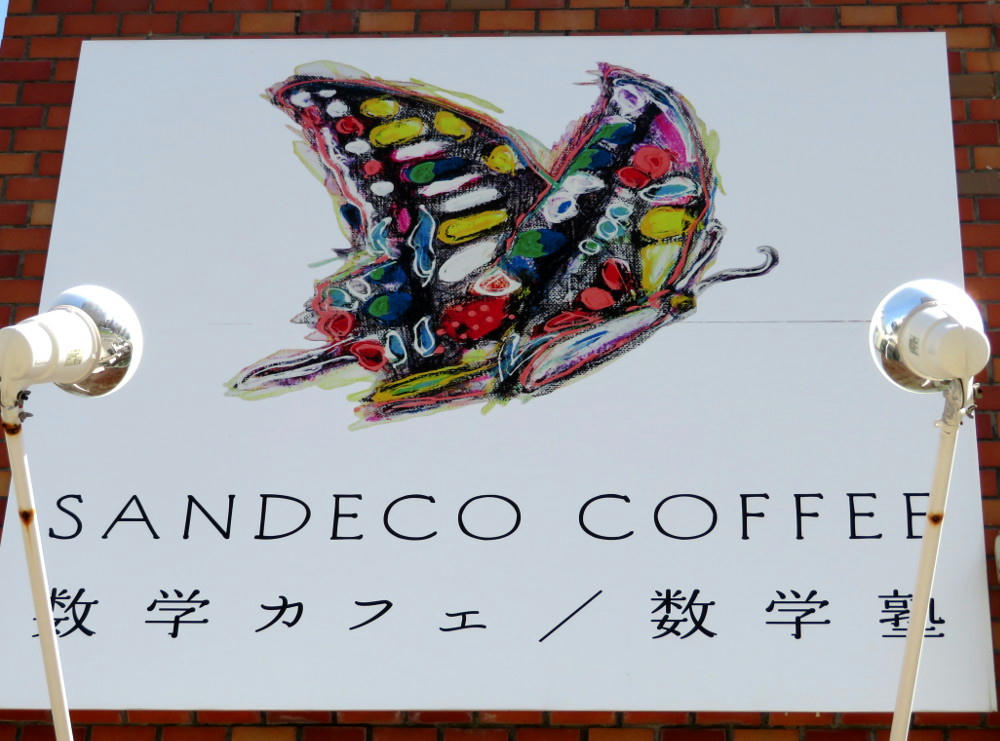
There's a coffee shop just across the street from City Hall that I see all the time when I go to and from the English school. They used to roast their own coffee, and I went one time a few years back to check it out. The hand-ground and poured coffee was good, but they were charging something like 400 ($3.70 USD) yen for one small cup, with no free refills, so I didn't go back.
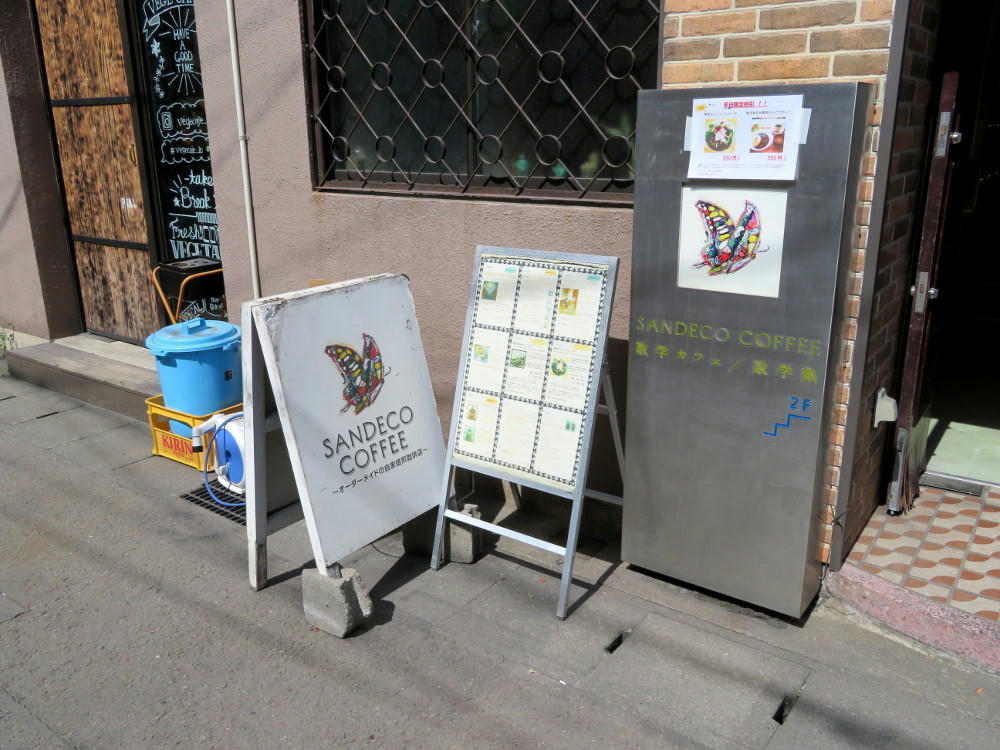
Then, 2 weeks ago, a couple of my students told me about this "suugaku cafe" (mathematics), where the owner was a recreational math enthusiast. The cafe serves as a coffee shop during the day, and then as a cram school for junior high students in the evening. My students suggested I check it out, but they didn't know the name of the place. So I went online and did a google search on "suugaku cafe kagoshima". The results showed it was near my school, and the next day I had a little free time and was in the area, so I swung by. I was surprised to see that it was the former coffee roaster, Sandeco, and that they still had the same sign as before. Underneath the sign, it says "mathematics cafe and cram school." So, maybe it always was math-oriented and I just didn't realize it back then (but I don't think so. I think they may have changed ownership.)
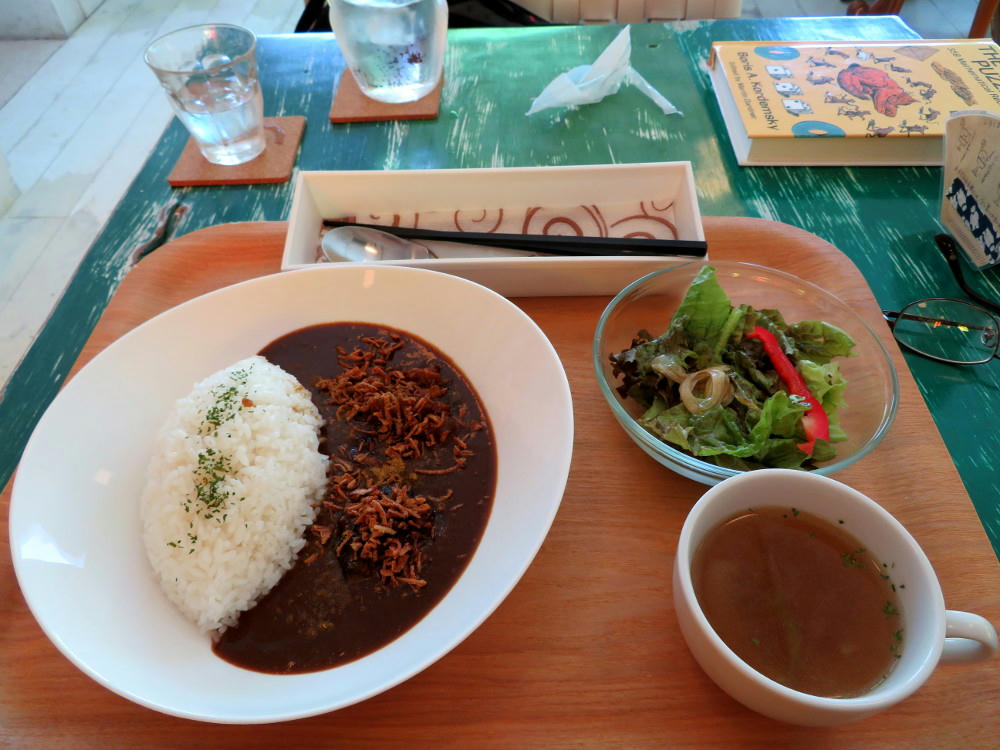
In general, they look like a regular cafe, serving curry rice with sweet Kagoshima pork, and Shirokuma shaved ice desserts. This lunch set of the curry rice, onion soup, salad, and a small cup of hot coffee after the meal was 750 yen ($7 USD). A bit more than I want to pay for lunch on a regular basis, but it was good, at least.
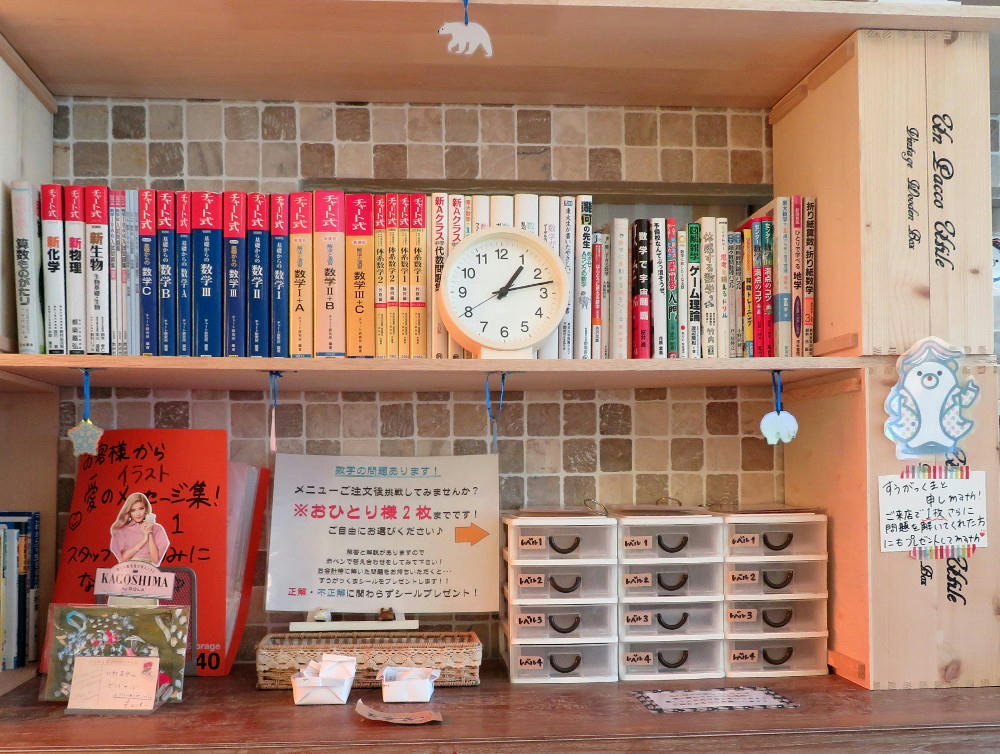
The only thing that hints at the math aspect of the place is this row of text books, and the white case of drawers in the lower right corner of the nook. (Plus, advertising in the menu for their mascot, Suuga-kuma, (a play on Suugaku (math) and kuma (bear)).) The drawers hold 12 different math puzzles on 3x5 cards, and are divided up into 1st year through 3rd year junior high-level difficulties, 4 cards per level.
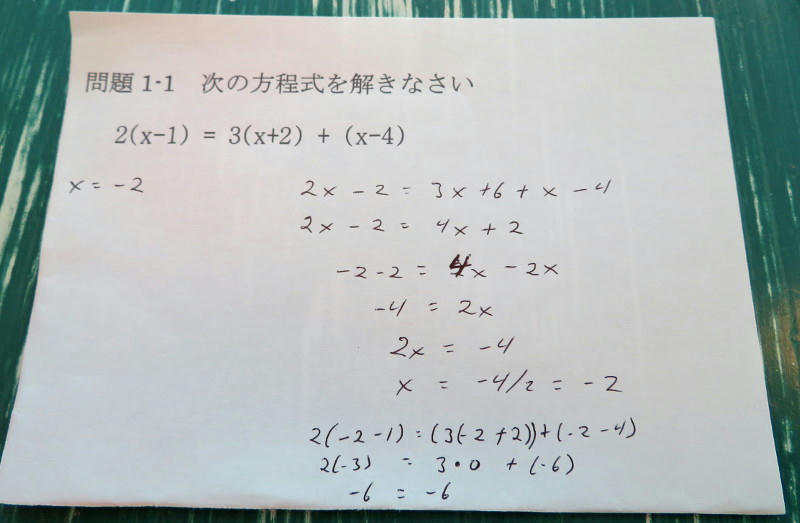
I asked the waitress how the system worked, and she explained it, saying that the easiest puzzle was in the upper left drawer, and the hardest one, which she thought was really hard, was in the lower right drawer. (So, difficulty goes from top to bottom, left to right.) I decided to try my luck with the easiest one. What I got was 2(x-1) = 3(x+2) + (x-4), solve for x.
It took me more time to figure out the instructions than it did to do the actual problem. I showed all my steps just in case that's what the rules required. While I was at the cafe, there were another 9-10 customers, who were also there to do the problems. The rules allow two puzzles per customer per order, so I grabbed the second puzzle for 1st year students. I messed up on one step, showing that it's better for me to not do these things in pen. I did correct my mistake, though.
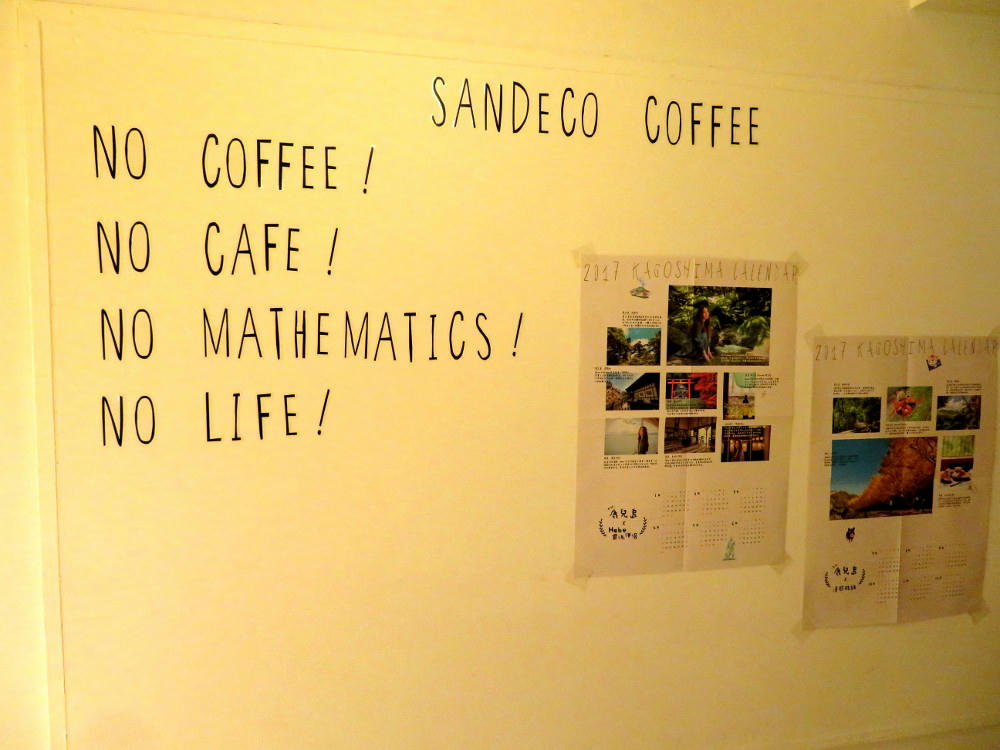
Sandeco loves its coffee and math.
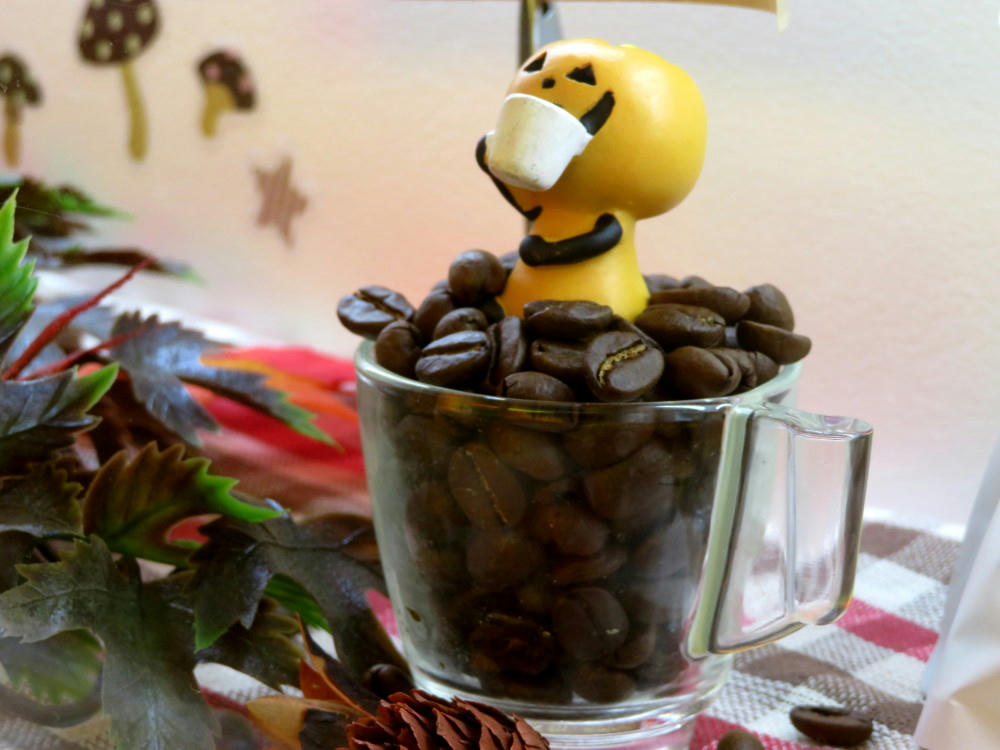
There's kind of a window display in the hallway leading from the door to the main seating area, and in the display were coffee-themed Halloween decorations.

The prizes for completing the puzzles correctly are little paper stickers featuring Suuga-kuma (a white caricature of a bear, wearing a textbook for a professor's cap) and some kind of joke saying. The one on the left says "eating meals, taking baths, and sleeping are good for you." There are a total of 50 seals, but only 12 puzzle cards, so I don't know how the cafe selects the seals you get at any given time, if they're related to the puzzle, or if they're totally random. (Think of the seal like getting a little gold star sticker on your assignment sheet. It'd be cheaper to just go out and buy your own star stickers.)
It's not worth going back every week just to collect the little seals, but I might consider getting one of the shaved ice desserts on a Saturday if I have a 1-hour break between lessons.
(Secret - I did sneak a look at the hardest problem just to find out how hard it is. It's pretty simple, but I'm having trouble understanding the Japanese instructions. It's asking for dy/dx of a simple equation, but I'm not sure if this is supposed to be differentiation or integration. I'm guessing differentiation. Keep in mind, this is a junior high-level problem, and in the U.S. in the 1970's, I didn't get into differentiation until I got into college.)




No comments:
Post a Comment